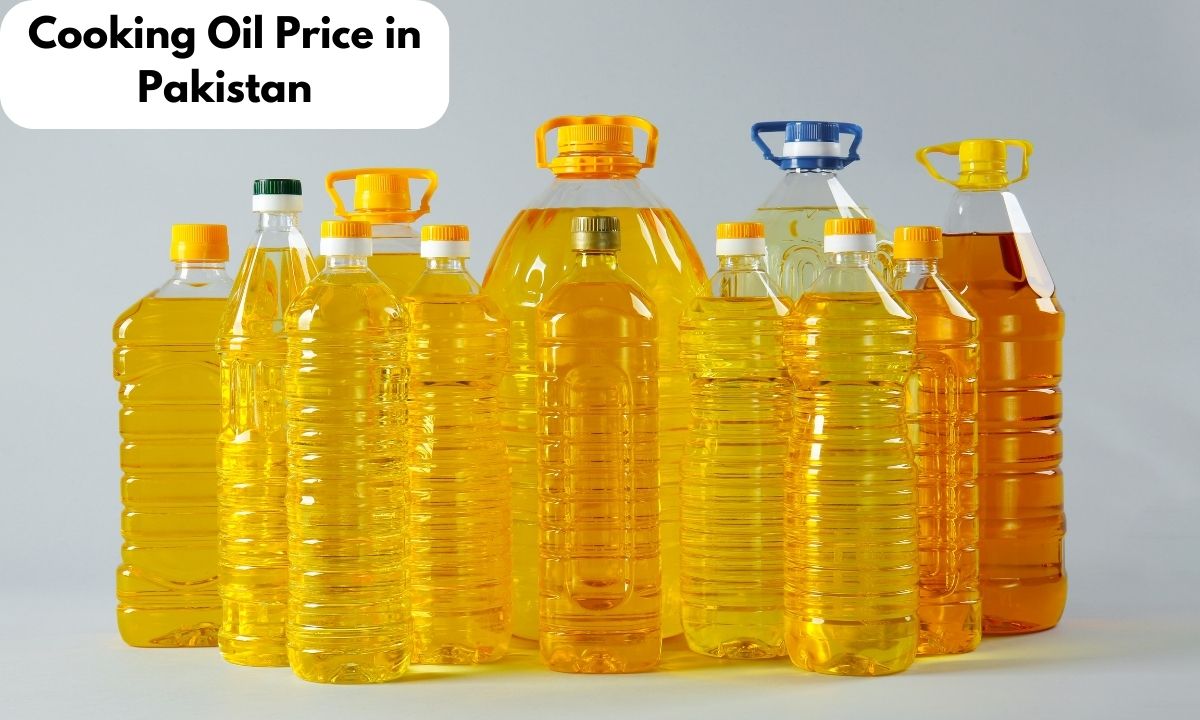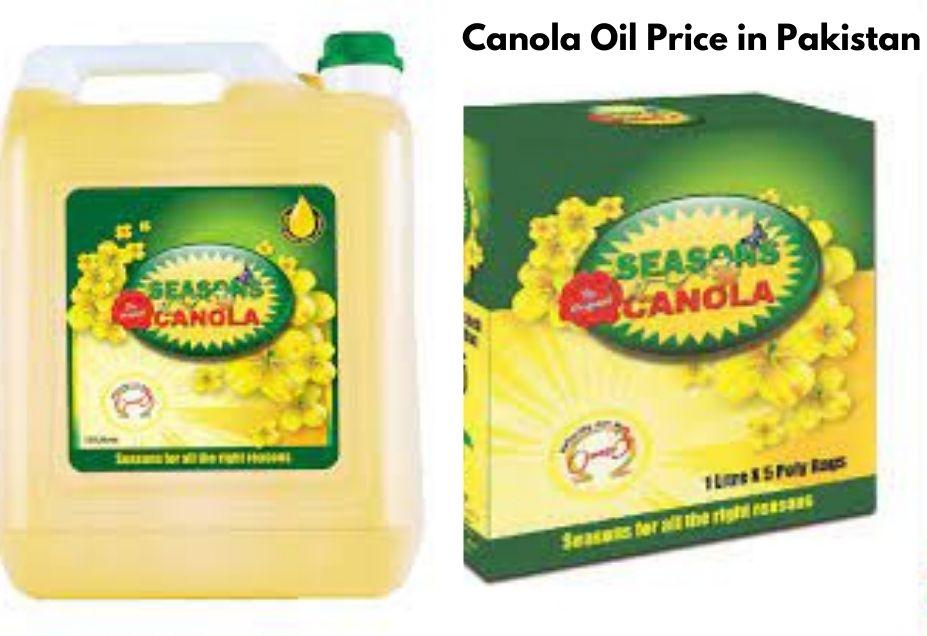Cooking Oil Price in Pakistan (Latest Guide)
The cooking oil industry in Pakistan has experienced remarkable growth, reaching a value exceeding PKR 1,161 million in FY20. This surge in growth can largely be attributed to escalating prices. Currently, consumers face a broad price spectrum, ranging from Rs. 484 for a 1 kg pack to Rs. 2750 for a 5 kg pack.
Such variations underscore the significance of cooking oil costs in the daily routines of many Pakistanis. Factors such as international crude oil prices, production expenditures, and governmental policies collectively contribute to this upward price trend, with ghee and cooking oil prices witnessing an increase of Rs26 per kg/liter.
Given these dynamics, gaining a clear understanding of the cooking oil market becomes indispensable for consumers aiming to make well-informed purchasing choices.

Popular Cooking Oil Brands in Pakistan
| Brand | Price per kg (PKR) |
| Dalda | 545 |
| Habib | 550 |
| Mezan | 484 |
| Soya Supreme | 585 |
| Kisan | 470 |
| CanOlive | 610 |
| Kashmir | 545 |
| Borges | 945 |
| Sufi | 570 |
| Eva | 547 |
Factors Influencing Cooking Oil Prices in Pakistan
The cost of cooking oil in Pakistan is shaped by several key factors:
1. International Crude Oil Prices: Fluctuations in global crude oil prices exert a substantial impact on cooking oil prices in Pakistan. The ripple effect occurs as changes in crude oil prices influence energy costs, subsequently affecting manufacturing and transportation expenses.
2. Production Costs: The expense involved in producing cooking oil is a pivotal determinant of its market price. Notably, the prices of edible oils surged by 130% over three years due to heightened production costs.
3. Market Demand: The prevailing market demand for cooking oil also holds sway over its pricing. Projections indicate an anticipated annual growth of 0.9% in the consumption of edible oils in Pakistan, reaching 1.12 million metric tons by 2026.
4. Quality and Brand Influence: The quality and brand recognition of cooking oil can impact its pricing. Superior quality oils or those associated with well-known brands often command higher prices.
5. Income Growth and Population Increase: The escalating levels of income and population growth contribute to an augmented demand for cooking oil, potentially leading to a surge in its market price.
6. Urbanization Effects: Urbanization induces shifts in dietary habits and an upswing in the demand for cooking oil, thereby influencing its market price.
7. Brand Preferences: Consumer liking or disliking for specific brands can also sway the price of cooking oil. Popular or preferred brands tend to carry higher price tags.
8. Government Policy Impact: Government policies, encompassing taxes, subsidies, and import duties, exert a significant influence on cooking oil prices. Notably, the government of Pakistan implemented substantial price hikes for ghee and cooking oil in response to a surge in fuel prices.
Comprehending these factors empowers both consumers and businesses to navigate the dynamic cooking oil market in Pakistan with greater insight and effectiveness.
Impact of Cooking Oil Prices on Food Inflation in Pakistan
The fluctuating prices of cooking oil in Pakistan significantly influence food inflation, which gauges the rate of price increases for essential food items and, in turn, impacts consumers’ purchasing power. Let’s delve into the key insights regarding this relationship:
1. Direct Influence on Food Inflation: A surge in cooking oil prices directly escalates food inflation. Given its integral role in Pakistani cuisine, any price escalation in cooking oil swiftly resonates in the broader food pricing landscape.
2. Ripple Effect on Commodity Prices: Elevated oil prices escalate production and transportation costs, subsequently amplifying the retail prices of vital food commodities like wheat, maize, and rice. Research indicates that for every one percent uptick in oil prices, grain prices swell by approximately 0.18 percent.
3. Impacts Beyond Food Inflation: Although the ramifications of oil price fluctuations are more accentuated in non-food inflation sectors, they undeniably reverberate within the food pricing domain. Notably, agricultural input costs, encompassing fertilizers and transportation, are intrinsically linked to oil prices, thereby influencing food prices.
4. Insights from Historical Data: Past trends illuminate a robust association between inflation rates and oil prices, especially evident during economic tumults or pronounced oil price surges.
5. Recent Inflationary Trends: Pakistan recently grappled with its most elevated annual inflation rates, with soaring food and cooking oil prices at the forefront. March witnessed urban and rural food inflation rates standing alarmingly at 47.1% and 50.2%, respectively.
6. Global Determinants: International developments, such as the Ukrainian conflict, soaring energy costs, and meteorological events like La Niña, also shape oil prices. Consequently, these global shifts influence food commodity prices within Pakistan.
7. Impact of Economic Policies: The government’s economic strategies, particularly those pertaining to fuel pricing, can amplify the oil price-induced food inflation effects. Notably, Pakistan’s recent fuel price hikes have been pinpointed as pivotal drivers behind heightened inflationary expectations.
In essence, comprehending the intricate interplay between cooking oil prices and food inflation is paramount for policymakers and consumers alike in navigating Pakistan’s economic landscape.
Pakistan’s Reliance on Imported Cooking Oil
Pakistan’s significant dependence on imported cooking oil deeply influences its agricultural and economic dynamics. While the nation’s consumption of vegetable oil hovers around 4.5 million tons, local production merely caters to about 0.75 million tons. This stark disparity mandates the importation of roughly 3 million tons of vegetable oil to satisfy domestic needs.
The gravity of this import dependence is accentuated by Pakistan’s recent prohibition on genetically modified (GMO) food products. Such a restriction constricts the vegetable oil supply, further elevating import demands.
Consequently, Pakistan has sought partnerships with nations like Indonesia, a principal producer of crude palm oil (CPO). Reflecting this collaboration, Pakistan imported a notable 2.78 million tonnes of palm oil from Indonesia in 2021, solidifying its position as a premier importer of Indonesian palm oil.
This heightened import activity transcends mere consumer demand; it carries weighty economic ramifications. Illustratively, Pakistan’s cooking oil imports surged to $3.56 billion in the initial 11 months of the preceding year, marking a significant uptick compared to prior periods. Over the past two decades, the nation’s reliance on imported edible oils and oilseed meals has intensified, escalating from 77 percent in 2000 to a staggering 86 percent of domestic edible oil consumption by 2020.
While endeavors to curtail the import burden include fostering domestic edible oil production, initiatives like pilot projects aimed at cultivating palm and soybean crops have encountered obstacles and yielded suboptimal outcomes. Notwithstanding these impediments, Pakistan’s vegetable oil consumption trajectory continues its upward trajectory, propelled by factors encompassing population expansion, evolving dietary inclinations, and augmented per capita income levels.
Future Projections for the Cooking Oil Market in Pakistan
The cooking oil sector in Pakistan is poised for significant expansion in the forthcoming years. Drawing insights from recent findings, several pivotal observations emerge:
1. Market Growth Trajectory: The Edible Oils market in Pakistan is on a growth trajectory, with revenues anticipated to burgeon annually at a rate of 7.79% (CAGR 2023-2028). This growth trajectory is projected to culminate in a market valuation of US$2.98 billion by 2028.
2. Consumption vs. Production Dynamics: While the consumption of edible oils within Pakistan is predicted to witness a modest annual growth of 0.9%, touching 1.12 million metric tons by 2026, domestic production is slated to witness a decline of 1.2% annually. Such a juxtaposition accentuates Pakistan’s escalating dependency on imported cooking oil.
3. Oilseed Production Outlook: Anticipated improvements in cottonseed production signal an optimistic outlook for total oilseed production, slated to amplify to 2.95 million tons in 2023/24—a commendable 24% surge from the preceding year.
4. Edible Oil Imports: Aligned with population dynamics, the appetite for edible oils is poised to escalate by approximately 5%. Consequently, palm oil imports are projected to ascend, touching 3.6 million tons by 2023/24.
5. Rising Health Consciousness: A discernible shift towards health consciousness is evident among consumers. This evolving consumer sentiment prompts a reevaluation of dietary choices, accentuating preferences for health-enhancing products—a trend accentuated further in the aftermath of the global pandemic.
6. Competitive Landscape: The edible oils arena in Pakistan is characterized by intense competition, with market participants relentlessly vying for dominance. Foremost contenders are channeling efforts towards product innovation, stringent quality standards, and robust marketing strategies to carve a distinctive competitive niche.
Conclusion
Grasping the intricacies of cooking oil pricing in Pakistan holds paramount importance for both consumers and businesses. Given its pivotal role in Pakistani culinary traditions, the pricing of cooking oil is shaped by a myriad of determinants, exerting a notable influence on food inflation rates.
Pakistan’s substantial dependence on imported cooking oil, predominantly sourced from nations like Indonesia, underscores the nation’s vulnerability to global market fluctuations. Notwithstanding endeavors to bolster domestic production, the chasm between local output and burgeoning consumption persists.
Forecasts suggest a robust growth trajectory for Pakistan’s cooking oil market in forthcoming years. As of 2023, consumers encounter a price spectrum spanning from PKR 484 to PKR 600 per kg, necessitating informed decision-making strategies when navigating purchase choices.





